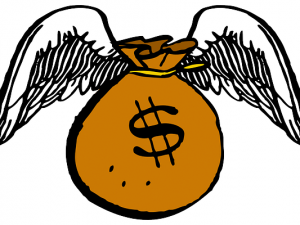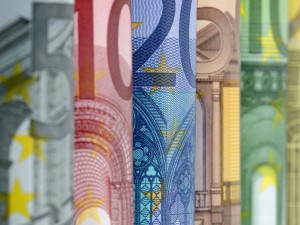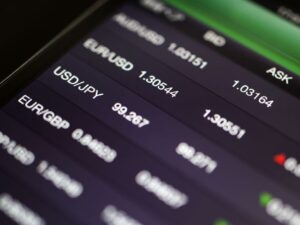
A pegged currency is a type of monetary system whereby the value of one currency is fixed or “pegged” to the value of another currency, a basket of currencies, or a specific commodity such as gold. The purpose of pegging a currency is to stabilise the exchange rate and maintain a predictable value in relation to the currency or asset to which it’s pegged.
When a currency is pegged, the central bank or monetary authority of the country is responsible for ensuring that the exchange rate remains within a predetermined range. To maintain the peg, the central bank may buy or sell its currency in the foreign exchange market, adjust interest rates, or implement other measures to manage the supply and demand of the currency.
The type of pegged exchange rate regime a country chooses depends on its specific circumstances, economic goals, and policy considerations.
Types of currency pegs
Fixed peg
A fixed peg currency – also known as a fixed exchange rate system – is a monetary system whereby the value of a country’s currency is fixed or pegged to the value of another currency, a basket of currencies, or a commodity such as gold.
Under a fixed peg currency system, the central bank is responsible for buying or selling its currency in the foreign exchange market to maintain the pegged rate at a specific level. If the value of the currency rises above the desired level, the central bank sells its currency to increase the supply and decrease the value. Conversely, if the currency value falls below the desired level, the central bank buys its currency to decrease the supply and increase the value.
A fixed peg currency system can help control inflation and maintain economic stability by limiting currency fluctuations. However, maintaining a fixed peg currency requires a significant amount of foreign exchange reserves and may limit a country’s ability to pursue independent monetary policies.
Examples of fixed peg currencies include the Bahraini dinar (pegged to the US dollar), and the CFA franc (pegged to the euro).
Crawling peg
A crawling pegged currency is a type of exchange rate regime whereby a country’s currency is allowed to fluctuate within a certain range or band relative to a reference currency or a basket of currencies. Unlike a fixed regime where the exchange rate remains constant, a crawling peg allows for periodic adjustments or “crawls” in the exchange rate within the established band.
The crawling peg system is designed to provide some flexibility to the exchange rate while still maintaining a degree of stability. The exchange rate is adjusted periodically by a predetermined rate or formula, typically based on economic indicators such as inflation differentials and trade balances. The adjustments aim to reflect changes in the country’s economic fundamentals and to maintain competitiveness in international trade.
The advantage of a crawling peg is that it allows for gradual adjustments to the exchange rate, which can help reduce the impact of sudden shocks or imbalances in the economy – and maintain competitiveness. It provides some stability by preventing large and abrupt fluctuations in the rate, which can disrupt trade and investment flows.
Crawling peg systems have been implemented by various countries, including Argentina, China, and some countries in Southeast Asia. Exchange rate regimes can evolve, meaning the specific implementation and features of a crawling peg can vary depending on the country and its monetary policy objectives.
Basket peg
A basket-pegged currency is a type of exchange rate regime whereby a country’s currency is linked to a basket of other currencies, rather than being fixed to a single currency or a commodity like gold. The value of the domestic currency is determined by a weighted average of the currencies in the basket.
Under this system, the exchange rate is adjusted periodically to reflect changes in the value of the currencies in the basket. The weights assigned to each currency in the basket can be based on various factors, such as trade volumes, economic importance, or a combination of different criteria. The goal is to create a more stable exchange rate by diversifying the currency’s linkages.
This type of exchange rate regime provides several benefits: by pegging to a basket of currencies, a country can reduce its vulnerability to fluctuations in a single currency; and it can help to stabilise trade flows and manage inflation, as changes in the value of one currency in the basket can be offset by the others.
While less common than other exchange rate regimes, examples of countries that have adopted basket pegs include the Kuwaiti dinar and the Special Drawing Right (SDR) used by the International Monetary Fund (IMF) as a unit of account.
Advantages of pegged currencies
Stability
By fixing the exchange rate, the country reduces volatility and uncertainty in international trade and financial transactions. Businesses and individuals can rely on a predictable exchange rate, which makes planning and budgeting easier.
Price stability
A pegged currency can help maintain price stability, particularly in countries with high inflation rates. By pegging the currency to a stable foreign currency, the central bank aims to control inflationary pressures and ensure that prices remain relatively stable.
Facilitates international trade
A pegged currency can be advantageous for countries heavily engaged in international trade. A stable exchange rate makes it easier for exporters and importers to predict costs, negotiate contracts, and conduct business with trading partners. It reduces the risks associated with fluctuating exchange rates and provides a level of certainty in cross-border transactions.
Confidence and credibility
Pegged currencies can enhance a country’s credibility and instil confidence in its monetary policies. When a central bank commits to maintaining a fixed exchange rate, it signals its intention to control inflation and maintain macroeconomic stability. This commitment can improve investor confidence and attract foreign investment, fostering economic growth.
Reduced currency speculation
In a pegged currency system, there is generally less room for speculative trading and currency manipulation. Since the exchange rate is fixed, traders have limited opportunities to profit from short-term fluctuations in currency values. This can help reduce excessive speculation and volatility in the foreign exchange market.
Integration with a larger economy
Pegging a currency to a stable foreign currency can facilitate economic integration with a larger economic bloc or region. It can promote trade and investment flows between countries, increasing economic cooperation and shared benefits.
Pegged currencies also have potential drawbacks, such as loss of monetary independence and the risk of currency crises if the peg is unsustainable. Maintaining a peg requires careful management by the central bank, and there can be challenges in balancing domestic monetary policy objectives with the need to defend the pegged exchange rate.
Currency transfers
No matter what exchange rate regime a country adopts, its currency will always be subject to fluctuations in value. Don’t let this currency risk dent your finances when making international transfers, find the best deal by comparing the world’s leading foreign exchange companies here.
Tom Vicary
Author









